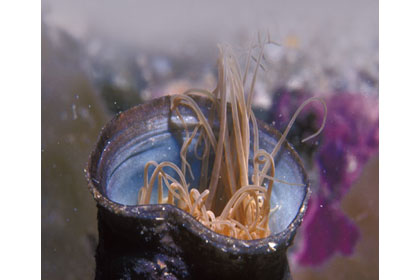The California Department of Fish and Wildlife has completed a interpretive poster for the California Marine Protected Area (MPA) network. The 26- x 36-inch full-color poster provides an informal introduction to the network, and features satellite imagery as well as photos of marine animals and habitats protected within MPAs. The poster is designed to give the public a first introduction to the California MPA network, and is not meant for navigational or regulatory use.
Passed by the California State Legislature in 1999, the Marine Life Protection Act (MLPA) required the California Department of Fish and Wildlife to redesign its system of marine protected areas (MPAs) to increase its coherence and effectiveness at protecting the state’s marine life, habitats, and ecosystems. For the purposes of MPA planning, a public-private partnership commonly referred to as the MLPA Initiative was established, and the state was split into five distinct regions (four coastal and the San Francisco Bay) each of which had its own MPA planning process. All four coastal regions have completed these individual planning processes. As a result the coastal portion of California’s MPA network is now in effect statewide. Options for a planning process in the fifth and final region, the San Francisco Bay, have been developed for consideration at a future date.
There are different marine managed areas classifications used in California’s MPA network. This includes three MPA designations (State Marine Reserve, State Marine Conservation Area, State Marine Park), a marine recreational management area (State Marine Recreational Management Area), and special closures:
In a state marine reserve, it is unlawful to injure, damage, take, or possess any living geological, or cultural marine resource, except under a permit or specific authorization from the managing agency for research, restoration, or monitoring purposes. While, to the extent feasible, the area shall be open to the public for managed enjoyment and study, the area shall be maintained to the extent practicable in an undisturbed and unpolluted state. Access and use for activities including, but not limited to, walking, swimming, boating, and diving may be restricted to protect marine resources. Research, restoration, and monitoring may be permitted by the managing agency. Educational activities and other forms of nonconsumptive human use may be permitted by the designating entity or managing agency in a manner consistent with the protection of all marine resources. (PRC Section 36710(a))
In a state marine park, it is unlawful to injure, damage, take, or possess any living or nonliving marine resource for commercial exploitation purposes. Any human use that would compromise protection of the species of interest, natural community or habitat, or geological, cultural, or recreational features, may be restricted by the designating entity or managing agency. All other uses are allowed, including scientific collection with a permit, research, monitoring, and public recreation, including recreational harvest, unless otherwise restricted. Public use, enjoyment, and education are encouraged, in a manner consistent with protecting resource values. (PRC Section 36710(b))
In a state marine conservation area, it is unlawful to injure, damage, take, or possess any living, geological, or cultural marine resource for commercial or recreational purposes, or a combination of commercial and recreational purposes, that the designating entity or managing agency determines would compromise protection of the species of interest, natural community, habitat, or geological features. The designating entity or managing agency may permit research, education, and recreational activities, and certain commercial and recreational harvest of marine resources. (PRC Section 36710(c))
In a state marine recreational management area, it is unlawful to perform any activity that, as determined by the designating entity or managing agency, would compromise the recreational values for which the area may be designated. Recreational opportunities may be protected, enhanced, or restricted, while preserving basic resource values of the area. No other use is restricted. (PRC Section 36710(e)). The Fish and Game Commission may designate, delete, or modify state marine recreational management areas for hunting purposes. (PRC Section 36725(a))
A special closure is an area designated by the Fish and Game Commission that prohibits access or restricts boating activities in waters adjacent to sea bird rookeries or marine mammal haul-out sites.
To download the poster or order a paper copy, go to dfg.ca.gov/marine/mpa/poster.asp. For more information, contact CDFW Fish and Wildlife Interpreter Marnin Robbins at (707) 441-5798 or [email protected].










